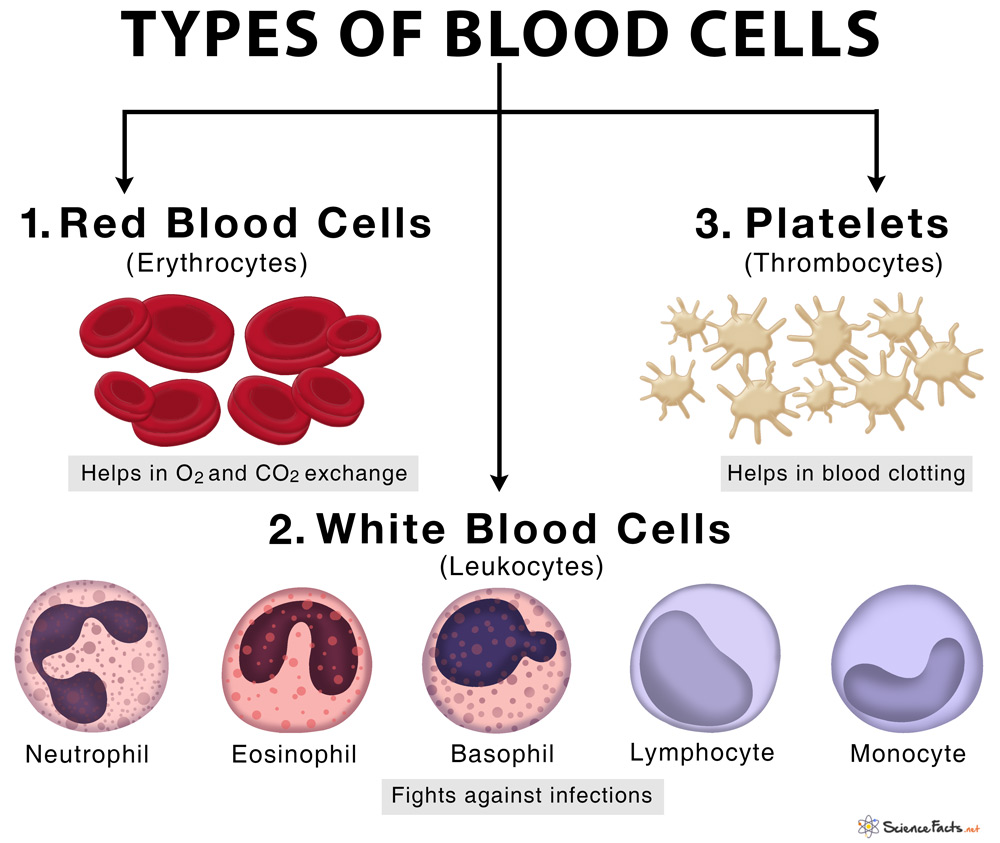Types of Blood Cells
1. Red Blood Cells (RBCs) or Erythrocytes
2. White Blood Cells (WBCs) or Leukocytes
3. Platelets or Thrombocytes
Abundance: They are the most abundant of all circulating blood cells, accounting for 40 to 45 percent of the total blood volume. Composition: They are rich in hemoglobin, an iron-containing protein that binds oxygen and provides its red color. Nucleus and most other organelles are absent in RBCs. Lifespan: 100 to 120 days Functions: Plays an important role in gas exchange, which include:
Carrying oxygen from the lungs and delivering them to all parts of the body. Picking up carbon dioxide from all end-tissues and delivering them to the lungs for excretion.
a) Granulocytes: Contain granules in the cytoplasm b) Agranulocytes: Absence of distinct granules in the cytoplasm Abundance: Found throughout the body including connective tissues, bloodstream, and lymphatic system. It makes up only 1% of the total blood volume. Composition: All white blood cells contain a nucleus, that makes it unique among all other blood cells. Lifespan: 1 to 3 days, and are constantly replaced by the bone marrow Types Broadly, WBCs are classified into five types: Neutrophils (Granulocytes), Eosinophils (Granulocytes), Basophils (Granulocytes), Lymphocytes (Agranulocytes), and Monocytes (Agranulocytes). Functions:
Producing antibodies that provide us protection and immunity against foreign infectious agents Generating cellular response against any attack by microorganisms such as bacteria, viruses, protozoa, and fungi. Engulfing foreign particles and destroying them inside the cell
Apart from these common functions, there are some specific functions performed by each of the five types of WBCs. Abundance: Present in less than 1% of the total blood cell count. Platelets are about 1/10th to 1/20th as abundant as white blood cells. Composition: Lacks nucleus and contains dense granules in the cytoplasm. Lifespan: 5 to 9 days Functions:
Helping in blood clotting, the process of preventing hemorrhage in a damaged blood vessel. Releasing multiple growth factors, such as platelet-derived growth factor (PDGF), chemotactic agent, and TGF beta, all of which have been found to have a role in the repair and regeneration of connective tissues.
